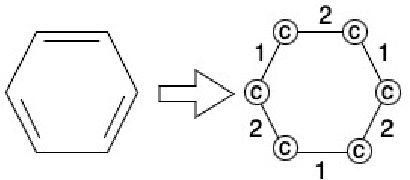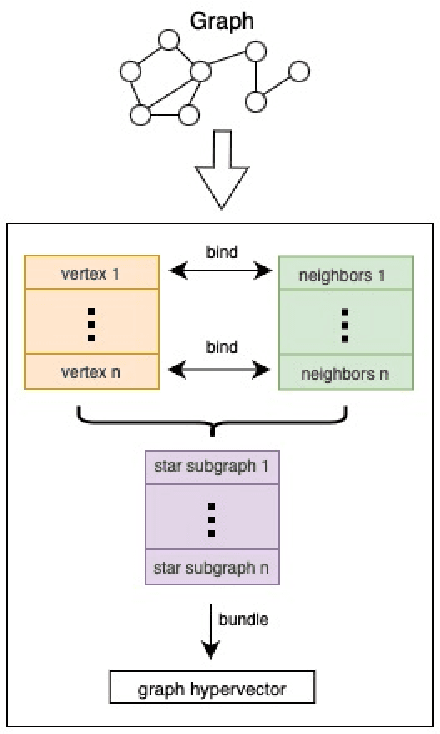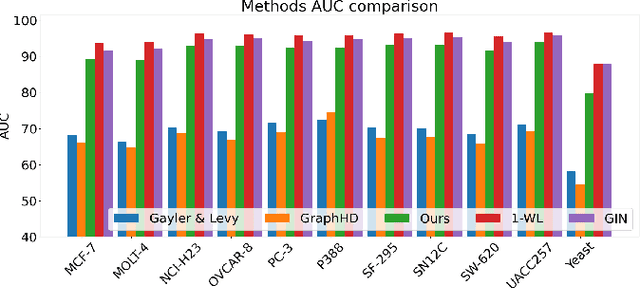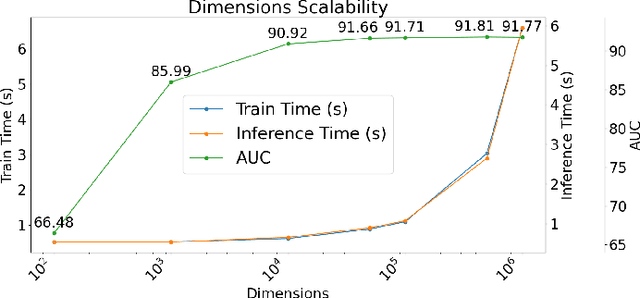Pere Verges
Molecular Classification Using Hyperdimensional Graph Classification
Mar 18, 2024



Abstract:Our work introduces an innovative approach to graph learning by leveraging Hyperdimensional Computing. Graphs serve as a widely embraced method for conveying information, and their utilization in learning has gained significant attention. This is notable in the field of chemoinformatics, where learning from graph representations plays a pivotal role. An important application within this domain involves the identification of cancerous cells across diverse molecular structures. We propose an HDC-based model that demonstrates comparable Area Under the Curve results when compared to state-of-the-art models like Graph Neural Networks (GNNs) or the Weisfieler-Lehman graph kernel (WL). Moreover, it outperforms previously proposed hyperdimensional computing graph learning methods. Furthermore, it achieves noteworthy speed enhancements, boasting a 40x acceleration in the training phase and a 15x improvement in inference time compared to GNN and WL models. This not only underscores the efficacy of the HDC-based method, but also highlights its potential for expedited and resource-efficient graph learning.
Enhanced Detection of Transdermal Alcohol Levels Using Hyperdimensional Computing on Embedded Devices
Mar 18, 2024Abstract:Alcohol consumption has a significant impact on individuals' health, with even more pronounced consequences when consumption becomes excessive. One approach to promoting healthier drinking habits is implementing just-in-time interventions, where timely notifications indicating intoxication are sent during heavy drinking episodes. However, the complexity or invasiveness of an intervention mechanism may deter an individual from using them in practice. Previous research tackled this challenge using collected motion data and conventional Machine Learning (ML) algorithms to classify heavy drinking episodes, but with impractical accuracy and computational efficiency for mobile devices. Consequently, we have elected to use Hyperdimensional Computing (HDC) to design a just-in-time intervention approach that is practical for smartphones, smart wearables, and IoT deployment. HDC is a framework that has proven results in processing real-time sensor data efficiently. This approach offers several advantages, including low latency, minimal power consumption, and high parallelism. We explore various HDC encoding designs and combine them with various HDC learning models to create an optimal and feasible approach for mobile devices. Our findings indicate an accuracy rate of 89\%, which represents a substantial 12\% improvement over the current state-of-the-art.
 Add to Chrome
Add to Chrome Add to Firefox
Add to Firefox Add to Edge
Add to Edge